FioranoMQ comes with full JMX support which enables management through standard JMX tools. It is comprised of a number of JMX enabled components, running within the Fiorano container. Each component performs particular operations while displaying its attributes, enabling administration and monitoring through standard JMX tools.
Fiorano eStudio is bundled with the JMX browser, which creates a JMX connection with FioranoContainer via either RMI or JMS connectors.
RMI Connector URL
RMIConnector connect URL – service:jmx:rmi:///jndi/rmi://<Server>:<Port>/fmq. The server can be either the machine name or the IP and the port where the RMIConnector Server is running.
The following sections explain how to use the following JMX based tools through the RMIConnector:
Fiorano JMX Browser
Fiorano eStudio supports a JSR 160 connection to the FioranoMQ Server through the RMIConnector.
To create a JMX Connection, perform the following steps.
- Launch Fiorano eStudio shipped with the FioranoMQ.
- In the Server Explorer, right-click on the pre-existing Fiorano JMX Connection, and select login. Once connected, the JMX tree is exposed with FioranoMQ MBeans as nodes.

MC4J
MC4J is an open source JMX browser used for connecting to FioranoMQ. To connect to FioranoMQ, perform the steps below:
- Install MC4J from https://sourceforge.net/projects/mc4j/ and launch the same.
- Create a new server connection metadata object by choosing a JSR 160 type connection.
- You must provide the JMX Connect URL and JMX jars in the classpath. You can also provide FioranoMQ jars in the classpath as some of the exposed JMX operations can depend on them.
- Provide the FioranoMQ Admin username and password to connect to FioranoMQ. This results in the MBean Tree view.
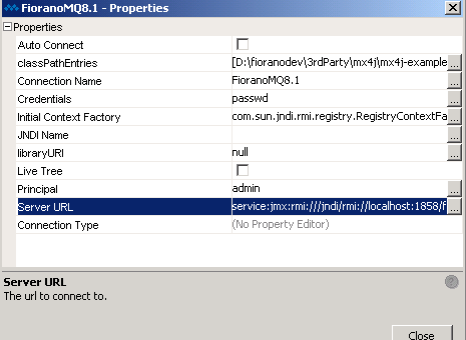
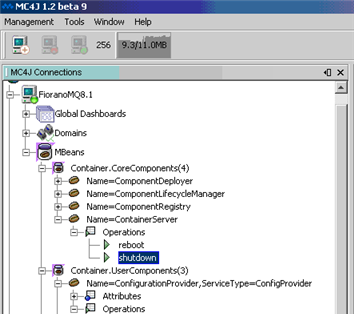
JConsole
JConsole is a JMX browser from Sun Microsystems (now Oracle) and comes bundled with JDK1.5.
Add the following lines in the '$FIORANOHOME/fmq/bin/fmq.conf' under
<java.system.props>tag.com.sun.management.jmxremote.port=portNumcom.sun.management.jmxremote.authenticate=falsecom.sun.management.jmxremote.ssl=false- Start the FioranoMQ Server
- Run JConsole from JDKInstallation\bin\JConsole
- Create a server connection using one of the three ways.
- Local Monitoring: Jconsole can be used to monitor a local Java platform - a JVM running on the same machine as shown in the figure below:
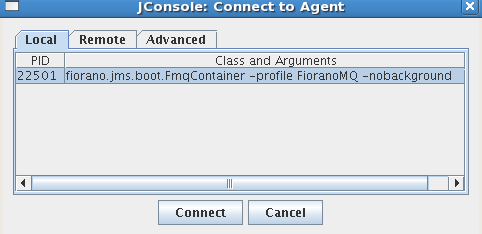
- Remote Monitoring: Give the Host IP Address, portNum, FioranoMQ Admin username and password, and connect as shown in the figure below:
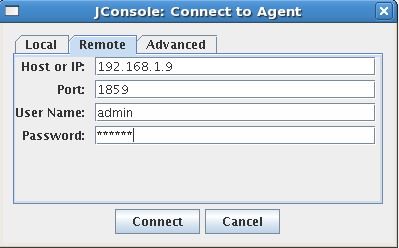
- Advanced Option: Provide the JMX URL as shown where HostIP is the IPAddress of the server machine. PortNum is the port number provided in fmq.conf. Give the FioranoMQ Admin username and password, and click connect.
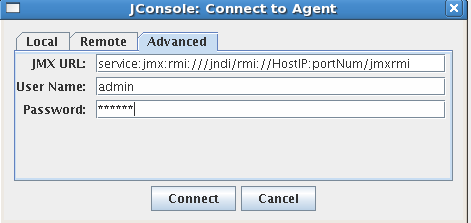
As a result, the MBeans explorer opens up as shown below: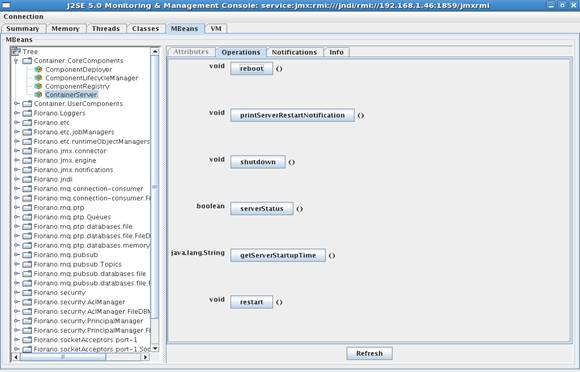
- Local Monitoring: Jconsole can be used to monitor a local Java platform - a JVM running on the same machine as shown in the figure below:
Java Code
As FioranoMQ is JSR 160 compliant, the user can write simple code to work with exposed components. FioranoMQ samples for working with exposed components can be found at FIORANO_HOME\fmq\samples\JMX.